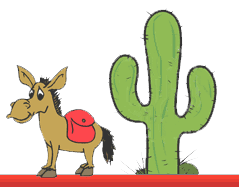“My view is that American trade [in hippo parts] is largely a by-product of other reasons to kill,” said Crawford Allan, a wildlife trade expert at the World Wildlife Fund. In Africa, he says, “no one throws anything away. So if you kill an animal because it’s a danger to your community, you eat the meat, you sell the skin, you sell the teeth, you sell the skull to stuffed collectors.” Hippo parts, such as teeth and skin, aren’t worth enough for local hunters to be a major reason to kill them, he says.
Other experts endorse this view. Lewison cites the example of Virunga National Park in the Democratic Republic of Congo, where the hippopotamus population fell from nearly 30,000 in the mid-1970s to less than 1,000 in 2005. The animals were killed during civil unrest and war “when everyone was starving . . And they ate them.”
Lewison acknowledges that hippo parts are sometimes found in seizures of traded wildlife products, but she says they are a small part of the illegal wildlife trade, which is supported by much more valuable products, such as elephant ivory and rhino horn.
A analysis of official trade numbers by HSI and its associates showed that of the hippopotamus products imported into the US between 2008 and 2019, 2,074 were hunting trophies. (Other countries legally imported about 2,000 hippopotamus trophies during the same period). A trade database compiled by the Convention on International Trade in Endangered Species of Wild Fauna and Flora, reveals that virtually all of the trophies and other hippopotamus items tabulated by the HSI come from countries with large, apparently well-managed hippopotamus populations. Neither HSI nor the Center for Biological Diversity has provided data linking hunting trophies or other legally traded items to hippopotamus declines.
Paul Scholte, an Ethiopia-based member of the Hippo Specialist Group, says regulated trophy hunting can have conservation benefits. Together with local colleagues, he conducted and published surveys of hippopotamus populations in northern Cameroon, showing declines in government-managed protected areas and populations stable or increasing in areas leased by private trophy hunting shops.
“The factor that explains whether a hippopotamus population is stable or not is the presence of year-round protection — from park rangers or scouts,” says Scholte, who explains that government rangers do not patrol during much of the rainy season. when moving is difficult. However, trophy hunting companies have the funding and motivation to continually protect their concession areas from the poachers and illegal prospectors who kill hippos in that region.
Hippo experts say the focus on parts trading is a distraction from more important things and increases friction between African countries. They point out that South and East African countries — which have larger and better-managed protected areas — generally host more secure hippopotamus populations than countries in Central and West Africa, where many populations are on the brink of extinction.
These changing circumstances lead to different views on conservation policies: West and Central African authorities are generally in favor of a ban on wildlife trade, which they believe would discourage poaching of their highly vulnerable populations, while most countries in southern Africa and some in eastern Africa claim that their populations are large enough to support hunting and commercial trade, which finance conservation.






